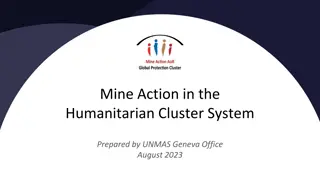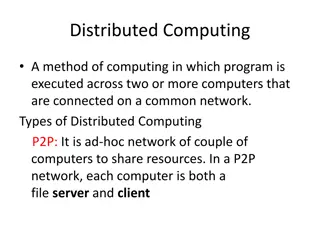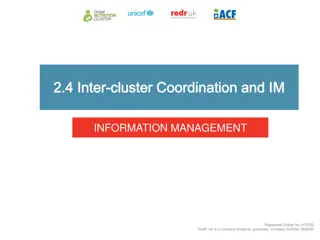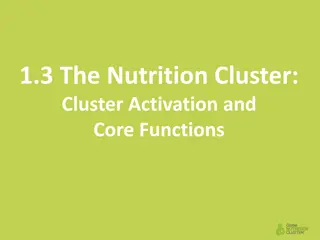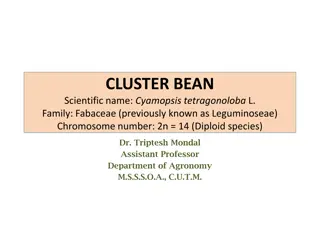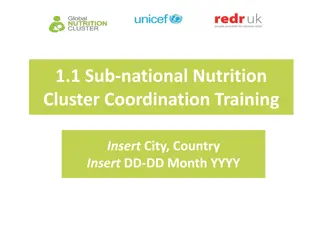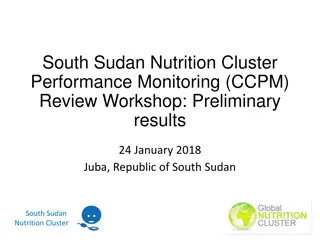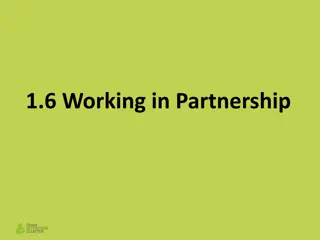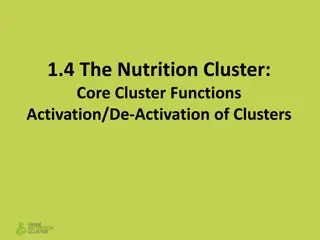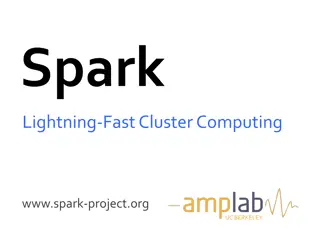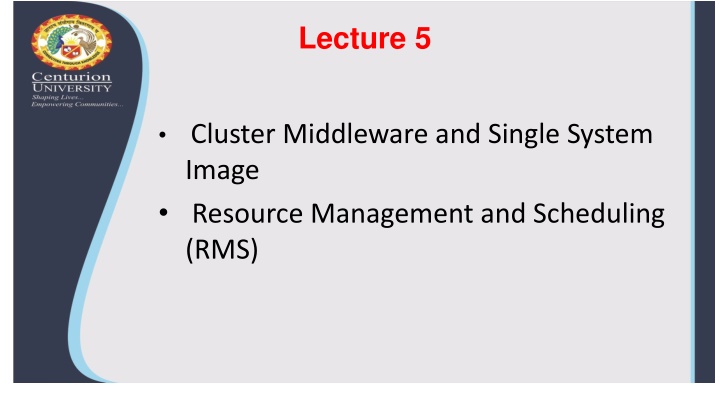
Cluster Middleware and Single System Image Resource Management
Explore the concept of Cluster Middleware and Single System Image (SSI) in resource management, where interconnected nodes function as a unified resource. This technology creates an illusion of a single powerful resource through a middleware layer, supporting features like fault tolerance and recovery. Learn about SSI levels, boundaries, benefits, design goals, services, and availability support functions.
Download Presentation

Please find below an Image/Link to download the presentation.
The content on the website is provided AS IS for your information and personal use only. It may not be sold, licensed, or shared on other websites without obtaining consent from the author. If you encounter any issues during the download, it is possible that the publisher has removed the file from their server.
You are allowed to download the files provided on this website for personal or commercial use, subject to the condition that they are used lawfully. All files are the property of their respective owners.
The content on the website is provided AS IS for your information and personal use only. It may not be sold, licensed, or shared on other websites without obtaining consent from the author.
E N D
Presentation Transcript
Lecture 5 Cluster Middleware and Single System Image Resource Management and Scheduling (RMS)
Cluster Middleware and Single System Image Single System Image (SSI) is the collection of interconnected nodes that appear as a unified resource. It creates an illusion of resources such as hardware or software that presents a single powerful resource. It is supported by a middleware layer that resides between the OS and the user- level environment. The middleware consists of two sub-layers, namely SSI Infrastructure and System Availability Infrastructure (SAI). SAI enables cluster services such as check pointing, automatic failover, recovery from failure and fault-tolerant.
Contd SSI Levels or Layers Hardware (Digital (DEC) Memory Channel, Hardware DSM and SMP Techniques) Operating System Kernel Gluing Layer (Solaris MC and GLUnix) Applications and Subsystems Middleware Applications Runtime Systems Resource Management and Scheduling Software (LSF and CODINE)
Contd. SSI Boundaries Every SSI has a boundary. SSI can exist at different levels within a system one able to be built on another
Contd SSI Benefits It provides a view of all system resources and activities from any node of the cluster. It frees the end user to know where the application will run. It frees the operator to know where a resource is located. It allows the administrator to manage the entire cluster as a single entity. It allows both centralize or decentralize system management It simplifies system management. It provides location-independent message communication. It tracks the locations of all resources
Contd Middleware Design Goals Transparency Scalable Performance Enhanced Availability
Contd Key Service of SSI and Availability Infrastructure SSI Support Services Single Point of Entry Single File Hierarchy Single Point of Management and Control Single Virtual Networking Single Memory Space Single Job Management System Single User Interface
Contd Availability Support Functions Single I/O Space Single Process Space Check pointing and Process Migration
Resource Management and Scheduling (RMS) It is the act of distributing applications among computers to maximize their throughput. The software that performs RMS consists of two components. Resource manager: It is concerned with problems, such as locating and allocating computational resources, as well as process creation and migration. Resource scheduler: It is concerned with tasks such as queuing applications, as well as resource location and assignment.
Contd RMS is necessary in many aspects such as, Load balancing Utilizing spare CPU cycles Providing fault tolerant systems Managed access to powerful systems
Services provided by RMS environment Process migration- It is used when a process can be suspended, moved and restarted on another computer within the RMS environment Check pointing-It is like snapshot of an executing program s state is saved.
Contd Scavenging Idle Cycles RMS system can be set up to utilize idle CPU cycles. It is observed that between 70% and 90% most of the time workstations are idle. Fault tolerance Fault tolerant support can mean that a failed job can be restarted or rerun. Thus, it guaranteeing that the job will be completed.
Contd Minimization of Impact on Users It can be done by either reducing a job s local scheduling priority or suspending the job. Suspended jobs can be restarted later or migrated to other resources in the systems. Load balancing Job distribution will allow for the efficient and effective usage of all the resources. Process migration can also be part of the load balancing strategy. It may be beneficial to move processes from overloaded system to lightly loaded ones.
Contd Multiple applications queues Job queues can be set up to help and manage the resources at a particular organization. Each queue can be configured with certain attributes. For example, certain users have priority of short jobs run before long jobs. Job queues can also be set up to manage the usage of specialized resources.

